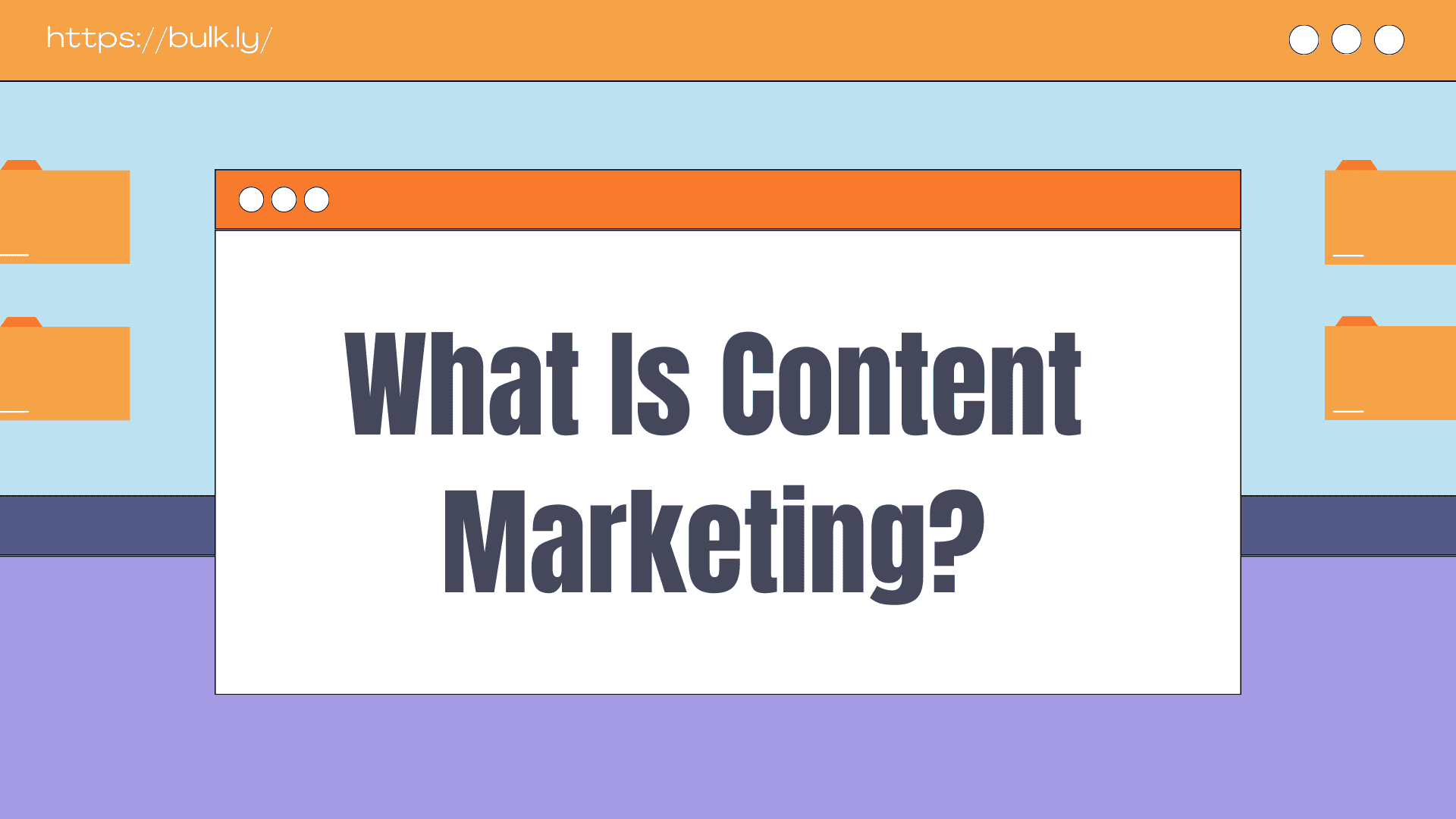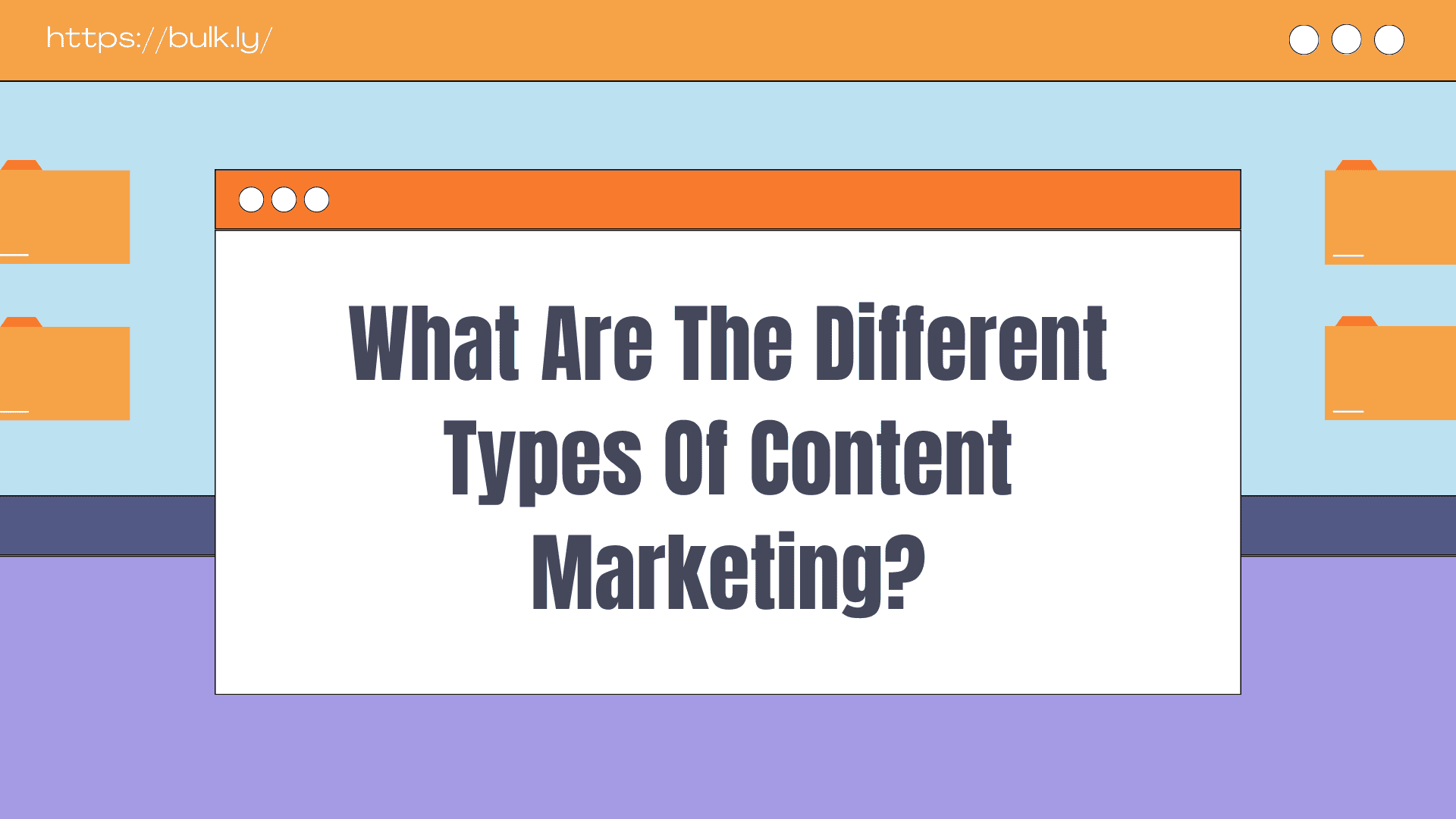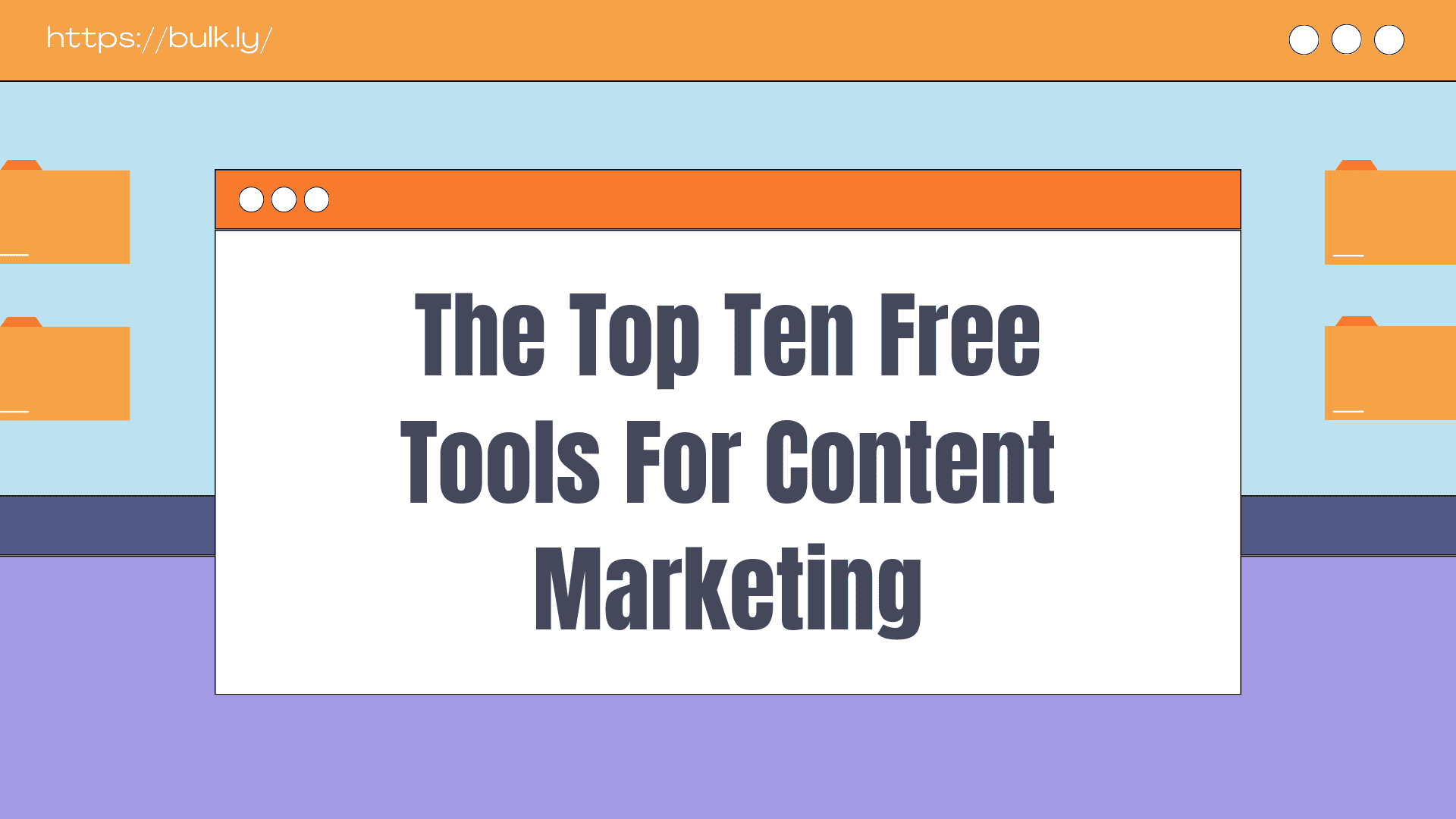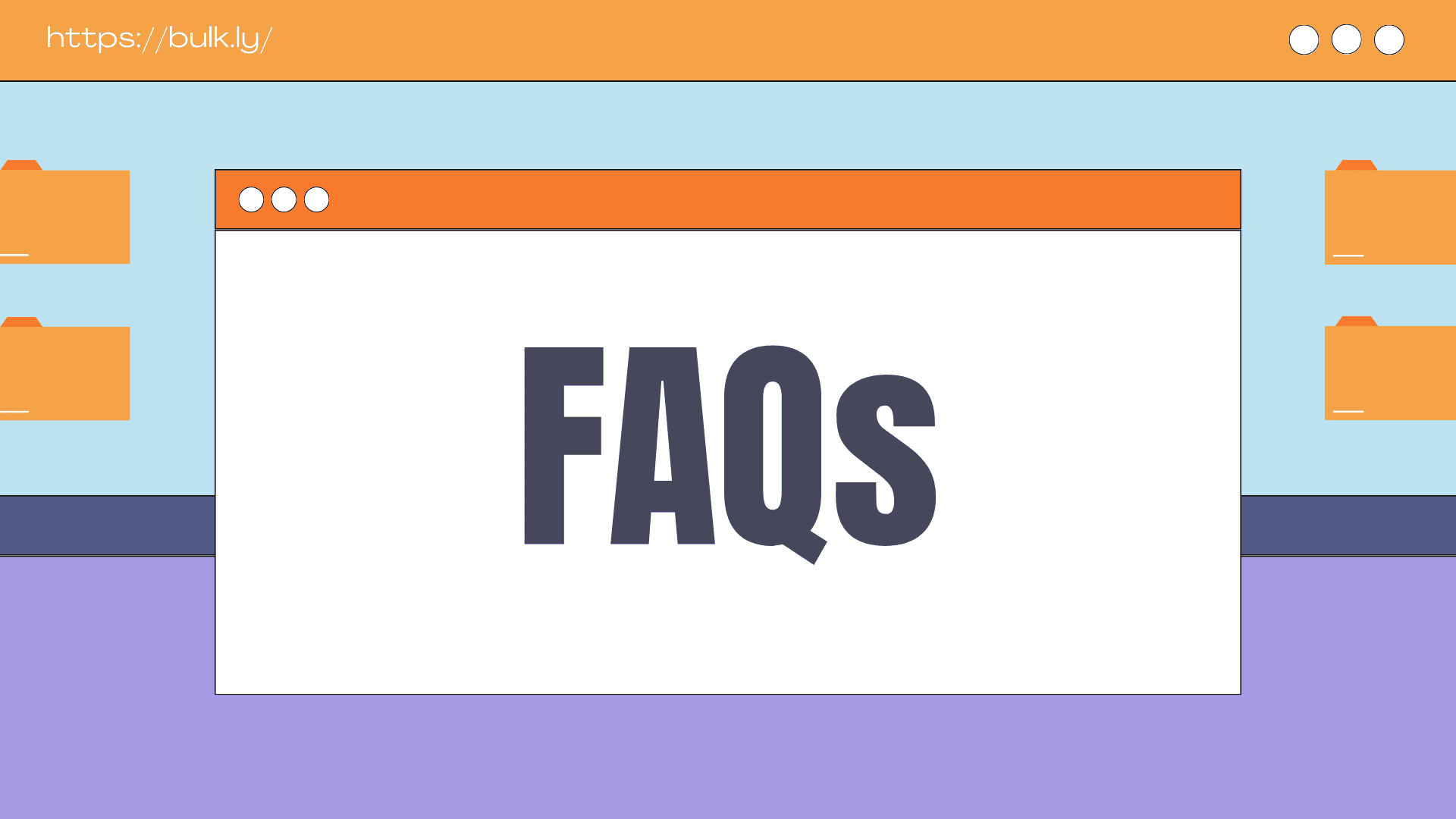As a business owner, you know firsthand the importance of finding new and effective ways to reach your target audience and drive sales. You may have tried a variety of marketing tactics, from social media ads to email campaigns, but have you considered the power of content marketing?
Content marketing is an essential tool for success that can help you reach new customers and increase brand engagement with existing ones. If this sounds daunting, don’t worry – we’ve put together a comprehensive guide to content marketing that will make getting started easier than ever!
What Is Content Marketing

Content marketing is an essential tool for any business looking to succeed in the digital age. It is a strategic approach to creating and distributing valuable and relevant content designed to attract, engage, and convert potential customers. Content marketing can include anything from blog posts and social media campaigns to webinars and other types of digital media.
It helps businesses build trust and brand engagement with their audiences by providing valuable information on topics they care about. By leveraging content marketing, businesses can achieve various goals, such as increased website traffic and conversions.
Sample Use Cases:
- A local coffee shop creates a blog on its website featuring articles on the history and origins of different coffee beans, recipes, and DIY tutorials for making specialty drinks at home. By sharing valuable content with its audience, the coffee shop can position itself as a trusted resource and drive traffic to their brick and mortar store.
- A fashion boutique launches a social media campaign featuring influencers wearing their latest clothing collections. Along with high-quality photos and videos, the boutique includes informative captions about each item’s materials, fit, and style. By showcasing its products relatable and engagingly, the boutique can increase brand awareness and drive online sales.
- A software company creates a series of videos for their YouTube channel demonstrating how to use their product and solve common issues. By providing helpful and educational content, the software company can attract and retain customers and drive new leads and sales.
What Are The Different Types Of Content Marketing?

When it comes to content marketing, there are many different types of content you can create and share with your audience. Each type serves a specific purpose and can be used in various ways to achieve your marketing goals. In this article, we’ll explore the different types of content marketing and how they differ.
Blog Posts:
Blog posts are articles published on a website or platform that provide information, news, or commentary on a particular topic. Blog posts can be long or short and may include text, images, videos, or other forms of media. While its best to use customized images in your blog, you also have the option of buying pictures online.
Videos:
Videos are visual content that can be used in content marketing. They can be live-action, animated, or a combination of both. They can be shared on various platforms, including YouTube, social media, and a company’s website. For greater control and privacy, many businesses also use private video hosting solutions like Spotlightr to manage branded content.
Infographics:
Infographics are visual representations of data or information designed to be easily understood and interpreted. They often include graphics, charts, and other visual elements to illustrate complex ideas clearly and concisely.
Social Media Posts:
Social media posts are messages, images, or videos shared on social media platforms like Facebook, Twitter, and Instagram. These posts can be used to promote products or services, engage with followers, or share valuable content.
Ebooks:
Ebooks are digital books that can be downloaded and read on electronic devices, such as computers, tablets, and smartphones. Ebooks can be used in content marketing to provide in-depth information on a particular topic and drive leads and sales.
Webinars:
Webinars are seminars or workshops typically conducted in real-time and include audio, video, and presentation elements. Webinars can be used in content marketing to provide educational or informative content to a target audience.
Overall, the different types of content marketing differ in terms of format, length, and the types of media used. Some varieties, such as blog posts and ebooks, are more suited for providing detailed information on a particular topic. In contrast, others, such as videos and social media posts, are better for engaging with an audience or promoting products or services.
Let’s explore the various benefits of content marketing and provide real-life examples of how businesses have achieved success through this strategy.
The Benefits Of Content Marketing

Increased brand awareness:
By creating and sharing valuable content, businesses can increase their visibility and reach, increasing brand awareness. For example, a software company that makes a series of educational videos designed to rank on YouTube can attract a larger audience, leading to more people becoming aware of its brand.
Improved customer engagement:
By providing valuable and engaging content, businesses can build stronger customer relationships and enhance customer engagement. For example, an SEO software-as-a-service (SaaS) uses an email drip campaign to introduce their product, give a free trial, and eventually offer their deal. By providing free benefits, you can increase customer engagement effectively.
Increased traffic and sales:
By creating valuable and relevant content for its target audience, businesses can drive traffic to their website and increase sales. For example, a local coffee shop that makes a blog featuring recipes and DIY tutorials for specialty drinks can drive traffic to their website and encourage people to visit their store to try the beverages themselves.
Greater search engine visibility:
By creating high-quality and keyword-rich content, businesses can improve their search engine visibility and ranking, leading to more organic traffic to their website. For example, a B2B company that creates a series of informative blog posts on industry-specific topics can attract more visitors from search engines and increase leads and sales.
Enhanced credibility and authority:
By providing valuable and informative content, businesses can establish themselves as industry leaders and experts, leading to increased credibility and authority. For example, a State Farm Auto Insurance provides valuable resources like auto safety tips, road trip checklists, car maintenance advice, and more. This not only demonstrates their expertise in the field but also helps them create a bond of trust with potential customers. In addition to this free information they share on their blog, State Farm also offers helpful tools such as their Car Accident Tool Kit and Lease or Loan Calculator which further reinforces their position as the go-to source for car insurance. Another example would be a financial advisor sharing a sales tax calculator. in order to build their authority. That’s how content marketing enhances credibility and authority.
Increased social media followers:
By creating and sharing engaging content, businesses can attract more followers and expand their reach on these platforms. For example, a food and beverage company that shares recipes and cooking tutorials featuring their products on Instagram can grow Instagram followers organically and increase brand awareness.
Improved customer loyalty:
Businesses can improve customer loyalty and retention by providing valuable content that resonates with their audience. For example, a software company that creates a series of helpful videos demonstrating how to use its product and solve common issues can encourage customers to continue using it and recommend it to others.
Increased lead generation:
Businesses can generate leads and sales by creating valuable and relevant content for their target audience. Especially when you’re using lead generation tools and managing them with lead management software. For example, a B2B company that makes a series of informative evergreen webinars and white papers on topics related to their industry can attract leads and drive sales.
Enhanced customer education and support:
By providing informative and educational content, businesses can help educate and support their customers by improving their understanding of a product or service. This develops niche authority, especially when you use automation to get the edge over competitors. For example, a home appliance company that uses AI to create videos on how to use and maintain its products can help customers get the most out of their purchases and improve customer satisfaction.
Greater return on investment:
By creating and distributing valuable content, businesses can achieve a higher return on investment than traditional marketing forms. For example, a small business that makes a series of informative blog posts and shares them on social media can attract a larger audience and drive traffic and sales without needing a large budget.
How To Use Content Marketing To Grow Your Business?

Content marketing is a powerful tool to help businesses drive growth and reach their desired objectives. When used strategically, content marketing can help increase website traffic, improve engagement rates, and boost conversions. Here are some steps for using content marketing to grow your business.
Step 1: Define your target audience
The first step in marketing content to grow your business is defining your target audience. It involves identifying the demographics, interests, and needs of the people you want to reach with your content. A clear understanding of your target audience will help guide the creation and distribution of your content, ensuring that it resonates with the people you want to reach.
Step 2: Determine your content marketing goals
Next, you’ll want to determine your content marketing goals. These can be related to increasing brand awareness, driving traffic to your website, generating leads and sales, or a combination of these. A wise decision for any business will be to hire a fractional CMO who can help you set clear goals for your content marketing efforts, which will guide the creation and distribution of your content.
Step 3: Create a content marketing plan
With your target audience and goals in mind, you can create a content marketing plan and write high-quality content. This plan should include a list of the types of content you’ll make (such as blog posts, videos, infographics, etc.), the topics you’ll cover, and the distribution channels you’ll use (such as social media, email, or your website). It’s also a good idea to include a calendar or schedule for when you’ll publish your content. But if you’re too overwhelmed with all the tasks and deadlines for content marketing management, you can find a virtual PA assistant, who will ease the process for you.
Step 4: Create and publish valuable content
Now it’s time to build out a content production process to start creating and publishing valuable content. It can include blog posts, videos, infographics, and social media posts. It’s essential to focus on creating useful, relevant content for your target audience that aligns with your content marketing goals.
Step 5: Promote your content
Once you’ve created your content, you must promote it to your target audience. This can include sharing your content on social media, emailing it to your subscriber list, or featuring it on your website. It’s also a good idea to consider paid promotion methods, such as social media ads or sponsored content, to spread brand awareness and eventually boost conversions.
Step 6: Analyze and optimize your content marketing efforts
Finally, regularly analyzing and optimizing your content marketing efforts is essential. It can include tracking website visitors, engagement, and conversions and using this data to identify what’s working. You should also utilize surveys to check the brand awareness that your business has. You can then adjust your content marketing strategy to ensure you get the best investment return.
The Top Ten Free Tools For Content Marketing

We’ve compiled a list of the top ten free tools for content marketing, covering a range of categories, including design, social media management, email marketing, and SEO.
Canva:
Canva is one of the best graphic design tools out there. It allows users to create various designs, including social media posts, infographics, and more. It offers a wide range of templates and design elements, making it easy for users to create professional-quality designs without requiring design skills.
One of the benefits of Canva is its user-friendly interface, which allows users to quickly and easily create designs. Additionally, it offers a range of pricing options, including a free plan, making it a cost-effective tool for content marketing.
To use Canva:
- Create a free account on Canva.com
- Choose a template or start from scratch
- Add text, images, and design elements using the drag-and-drop editor
- Customize your design as needed
- Download or share your finished design
Hootsuite:
Hootsuite is a social media management tool that allows users to schedule and publish content and track and analyze their social media activity. It supports a wide range of social media platforms, including Facebook, Twitter, and Instagram.
It offers a range of features, such as the ability to schedule posts in advance and analyze the performance of your social media campaigns. One of the benefits of Hootsuite is its ability to save time and streamline social media management, making it a valuable tool for content marketing.
To use Hootsuite:
- Sign up for a free account on Hootsuite.com
- Connect your social media accounts
- Create a schedule for publishing content
- Use the analytics tools to track the performance of your social media campaigns
- Use the scheduling and publishing tools to manage your social media activity
Google Analytics:
Google Analytics is definitely one of the web analytics tools that everyone should know. It allows users to track and measure the performance of their website and online marketing campaigns. It offers a range of features, including the ability to track the website traffic, user behavior, and conversions provide insights into how visitors interact with a website.
One of the benefits of Google Analytics is its ability to provide a wealth of data and insights into a website’s performance, making it a valuable tool for content marketing.
To use Google Analytics:
- Sign up for a free account on Google Analytics
- Add the Google Analytics tracking code to your website.
- Set up goals to track specific actions on your website, such as form submissions or purchases
- Use the dashboard to track key metrics, such as website traffic and conversions.
- Use the reports and analysis tools to gain insights into user behavior and website performance.
BuzzSumo:
BuzzSumo is among the top content marketing tools in 2023, with features that allow users to discover and analyze the most famous content in their industry. It offers a range of features, including the ability to track the performance of your content and find influencers in your industry.
One of the benefits of BuzzSumo is its ability to provide insights into what content resonates with your target audience and help identify opportunities for content marketing.
To use BuzzSumo:
- Sign up for a free account on BuzzSumo.com
- Use the search bar to find popular content in your industry.
- Use the analysis tools to track the performance of your content.
- Use the influencer search tools to find and connect with influencers in your industry.
CoSchedule Headline Analyzer:
The CoSchedule Headline Analyzer is a tool that helps users create compelling and SEO-friendly headlines for their content. It analyzes a headline’s length, word choice, and structure and provides a score based on its effectiveness.
One of the benefits of the CoSchedule Headline Analyzer is its ability to help users create headlines that are more likely to grab their audience’s attention and rank well in search engines.
To use the CoSchedule Headline Analyzer:
- Go to the CoSchedule Headline Analyzer website
- Enter the headline you want to analyze
- The tool will provide a score and suggestions for improving the headline
- Use the suggestions to refine your headline until you have a compelling, SEO-friendly title for your content.
Grammarly:
If you’re looking for the most revolutionary AI writing software out there, you’ll find Grammarly at the top with its straightforward and error-free proofreading capabilities. It checks for grammar, spelling, and punctuation errors and offers suggestions for improvement. One of the benefits of Grammarly is its ability to improve the credibility and effectiveness of written content, making it a valuable tool for content marketing.
To use Grammarly:
- Sign up for a free account on Grammarly.com
- Install the Grammarly extension in your web browser
- Write your content as you usually would, and Grammarly will automatically check for errors and offer suggestions for improvement.
Ahrefs:
“Ahrefs is a comprehensive SEO tool that helps you improve your website’s visibility in search engines.” – By Rodrigo Lasanta from Digivate
Ahrefs is among the must-have SEO tools for every marketer. It helps users improve the visibility of their website in search engines. It offers a range of features, including keyword research, backlink analysis, and site audit tools. One of the benefits of Ahrefs is its ability to provide a wealth of data and insights into the SEO performance of a website, making it a valuable tool for content marketing.
“There are other comparable SEO tools on the market, such as Moz and Semrush, but Ahrefs is hands down my #1 pick when it comes to overall value and depth of data offered – especially backlink data. – Ryan Meighan, founder of Clicked SEO added.
To use Ahrefs:
- Sign up for an account on Ahrefs.com
- Use the keyword research tools to find relevant and popular keywords to target in your content
- Use the backlink analysis tools to identify and track the quality of the links pointing to your website
- Use the site audit tools to identify and fix any technical SEO issues on your website
Mailchimp:
Mailchimp is an email marketing tool that allows users to create and send email campaigns to their subscribers. It offers a range of features, including templates, segmentation, and analysis tools. One of the benefits of Mailchimp is its ease of use and ability to create professional-quality email campaigns, making it a valuable tool for content marketing.
To use Mailchimp:
- Sign up for a free account on Mailchimp.com
- Import your email list and create segments as needed
- Use the templates and design tools to make your email campaign
- Use the scheduling and sending means to send your campaign to your subscribers
- Use the analysis tools to track the performance of your email campaigns
Piktochart:
Piktochart is a graphic design tool that allows users to create professional-quality infographics and other visual content. It offers a range of templates and design elements, making it easy for users to create visually appealing content without requiring design skills.
One of the benefits of Piktochart is its ability to create engaging visual content that can be shared on social media and other platforms, making it a valuable tool for content marketing.
To use Piktochart:
- Sign up for a free account on Piktochart.com
- Choose a template or start from scratch.
- Add text, images, and design elements using the drag-and-drop editor.
- Customize your design as needed
- Download or share your finished infographic
Yoast SEO:
Yoast SEO is a WordPress plugin that helps users optimize their websites for search engines. It offers a range of features, including keyword optimization, XML sitemaps, and readability analysis, and provides suggestions for improvement.
One of the benefits of Yoast SEO is its ability to improve the visibility and ranking of website content in search engines, making it a valuable tool for content marketing.
To use Yoast SEO:
- Install the Yoast SEO plugin on your WordPress website
- Go to the Yoast SEO settings and configure your preferences
- As you create and publish content on your website, use the Yoast SEO tools to optimize your content for search engines
- Use the analysis tools to identify any issues and make improvements to your content as needed
BlogHandy:
BlogHandy is a no-code, headless blogging platform that helps users to add a blog to their existing website. It works with any kind of website as well as with websites created with website builders, such as Wix or Carrd, no-code builders, such as Webflow or Bubble or any other landing page or funnel builder. BlogHandy offers a variety of blog layouts that automatically adapt to the site’s existing design, colors and styles.
One of the benefits of BlogHandy is its ability to automatically take over the site’s design, colors, and CSS styling and thus making it seamlessly fit into the existing website without the need for a web designer or developer.
To use BlogHandy:
- Sign up for a free account on BlogHandy.com
- Copy-paste the code snippet into your existing website
- Choose your favorite blog layout
- Start writing your first blog posts
FAQs

How can content marketing help grow my business?
Content marketing can attract and retain customers and drive profitable action by providing valuable information and establishing thought leadership.
How do I create a content marketing strategy?
Define your target audience, set goals, conduct a content audit, and plan and schedule the creation and distribution of new content.
How do I measure the success of my content marketing efforts?
Track key metrics such as website traffic, leads, and conversions, and use tools like Google Analytics to analyze performance and identify areas for improvement.
What types of content should I create for my business?
The types of content you create will depend on your industry, target audience, and content marketing goals. Some options include blog posts, infographics, videos, ebooks, email newsletters, and social media posts.
Wrapping Up, How To Use Content Marketing
If you found this blog helpful, please share it with your network! Sharing valuable information with your colleagues and peers can help others learn about the benefits of content marketing and how to implement it effectively in their businesses.


